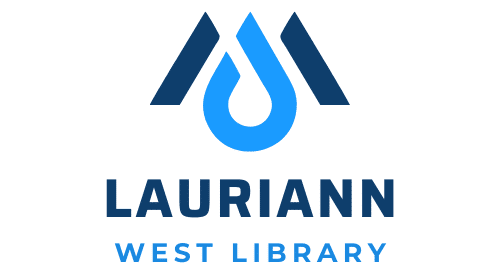As our environment continues to face numerous threats, the search for green alternatives has become more urgent than ever. One area where we can make significant changes is in our homes, particularly in the way we manage our water resources. An eco-friendly solution to consider is the implementation of a greywater system.
Greywater systems are a sustainable way to recycle water at home, reducing our dependence on fresh water and lowering our environmental footprints. This article delves into what these systems are, how they function, and the best methods to install them in a suburban home.
Topic to read : Can a Rooftop Greenhouse Be Efficiently Integrated into a Townhouse?
Understanding Greywater Systems
Before we delve into the installation process, it’s essential to understand what exactly we mean by greywater systems.
Greywater refers to the gently used water that comes from your baths, showers, hand basins, and washing machines. It doesn’t include water from toilets – that’s considered black water. A greywater system is designed to capture this water before it mixes with black water, treat it, and repurpose it, typically for garden irrigation.
Also to see : What Are the Most Effective Space-Heating Solutions for a Loft Conversion?
Using a greywater system can reduce your home’s water usage by up to 50%, making it a fantastic green alternative. It’s also particularly helpful in areas struggling with water shortages.
Choosing the Right Greywater System
There are several types of greywater systems available on the market. The most suitable one for your home will depend on a few factors including the size of your home, the local climate, the type of soil in your garden, as well as your budget and lifestyle.
- Laundry to Landscape Systems: As the name suggests, this system is designed to divert greywater from your laundry directly to your garden. It’s relatively inexpensive, easy to install, and doesn’t require any significant changes to your plumbing.
- Branched Drain Systems: These are a bit more sophisticated, using gravity to distribute greywater to different parts of your garden. It requires some minor changes to your home’s plumbing system.
- Pumped Systems: If your landscape is uphill from your house or your garden requires a lot of water, a pumped system might be the best choice. It uses a pump to distribute the greywater and usually includes some form of treatment system.
- Sand Filter Systems: This type of system will filter, treat, and store greywater for future use. It’s more advanced and expensive, but it’s great for larger properties or for those who want a more thorough treatment of their greywater.
Analyzing Your Home and Landscape
Before you start installing any system, you need to do a thorough analysis of your home and landscape.
First, check the greywater sources in your home. Most homes will have greywater from laundry, showers, and bathroom sinks. Kitchen sink water is usually not suitable because it contains fats and oils that can damage plants.
Next, look at your landscape. What types of plants do you have? Are they suitable for greywater irrigation? Most plants are, but some, particularly those that require low nutrients or have sensitive root systems, might not be.
You should also consider the slope of your landscape. If it’s relatively flat, a gravity-based system like a branched drain system might be best. If it’s uphill, you’ll likely need a pumped system.
Installation Process for a Greywater System
The installation process will vary depending on the type of system you’ve chosen. However, there are some general steps that you can expect.
Firstly, you need to reroute the pipes from your greywater sources to direct the water to your system instead of the sewer. Depending on your system, you might need to install a diverter valve to switch between sending greywater to the system or the sewer.
Next, you will need to connect your greywater system to your irrigation system. This might involve digging trenches for new irrigation lines, installing emitters, or connecting to existing irrigation lines.
For more advanced systems, you might also need to install a treatment system. This could include filters to remove larger particles or a disinfection system to kill any harmful bacteria.
Ongoing Maintenance and System Care
Once your greywater system is up and running, it will require regular maintenance to keep it operating efficiently. This typically includes cleaning filters, checking pipes for leaks, and ensuring the irrigation system is functioning correctly.
Remember that greywater can’t be stored for more than 24 hours because it will begin to smell and could develop harmful bacteria. So, it’s crucial to use it daily.
Also, remember to use eco-friendly, garden-safe products for washing and cleaning to ensure the greywater won’t harm your plants or soil.
In conclusion, installing a greywater system in your suburban home can be a fantastic way to conserve water and create a greener, more sustainable lifestyle. While it can be a bit of a project to install and maintain, the environmental benefits and potential savings on your water bill make it well worth the effort.
The Environmental and Economic Benefits of a Greywater System
In addition to saving water, greywater systems offer significant environmental benefits. By reusing greywater for watering plants, we reduce the amount of freshwater required in homes, thereby preserving our precious water reserves. This also reduces the demand for treated tap water, saving energy and resources that would have otherwise been used in water treatment processes.
Furthermore, using greywater on your garden can improve soil productivity by adding nutrients that are beneficial to plants. It’s like using a natural fertiliser, which can lead to healthier plants, reduce your need for chemical fertilisers, and create a more balanced ecosystem in your backyard.
From an economic perspective, a greywater system can save homeowners a considerable amount of money over the long term. Given that water bills make up a significant portion of household expenses, using a greywater system can reduce your water consumption by up to half, and therefore cut your water bills significantly.
Investing in a greywater system is also a smart move for those intending to sell their property as eco-friendly homes are becoming more appealing to buyers.
Conclusion: Embracing Greywater Systems for a Sustainable Future
The use of greywater systems is one of the most effective ways to promote water conservation at home. Not only does it recycle water from washing machines and other household appliances, but it also significantly reduces the reliance on freshwater supplies. It is an excellent method to make every drop count, especially in areas where water shortage is a common issue.
Aqua greywater systems, whether it’s a simple laundry to landscape system or a more complex sand filter system, offer great benefits. Homeowners can choose the type of greywater system that fits their needs and lifestyle. It is not merely about the initial costs but also about the long-term benefits to the environment and the subsequent savings on the water bill.
Installing and maintaining a greywater system requires a certain level of commitment. However, the benefits of such a system make it a worthwhile endeavor for eco-conscious homeowners. In a world increasingly affected by climate change and water scarcity, adopting a greywater system is indeed a stride in the right direction towards a sustainable future. We encourage every homeowner to consider integrating a greywater system into their home, not only for the benefit of the environment but also for the economic advantages it offers.
As we advance towards a more sustainable future, integrating eco-friendly solutions like greywater systems will become not just an option, but a necessity. It’s about changing our approach to resource management and making more responsible, sustainable choices. By doing so, we can contribute to a more sustainable future while also enjoying the advantages of lower bills and a healthier garden. With the right planning, installation, and maintenance, a greywater system can be a valuable addition to any suburban home.











